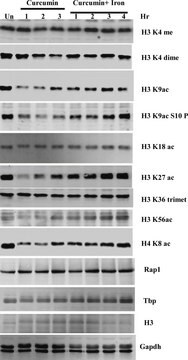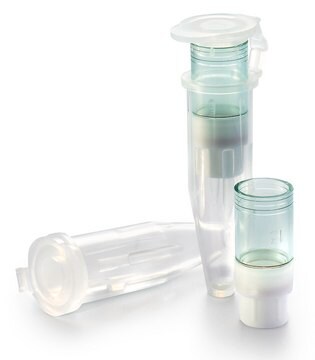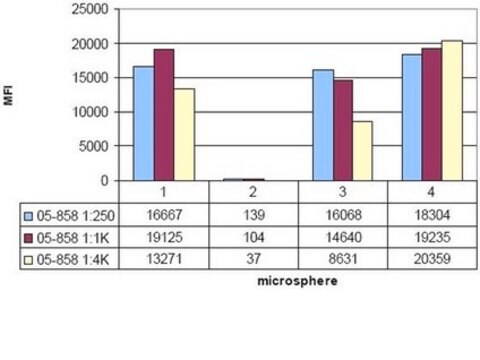05-928
Anti-Histone H3 Antibody, CT, pan, clone A3S, rabbit monoclonal
clone A3S, Upstate®, from rabbit
Synonyme(s) :
H3, Histone H3, H3 histone, family 3A
About This Item
Produits recommandés
Source biologique
rabbit
Niveau de qualité
Forme d'anticorps
purified antibody
Type de produit anticorps
primary antibodies
Clone
A3S, monoclonal
Espèces réactives
Saccharomyces cerevisiae, mouse, chicken, yeast, human, rat
Fabricant/nom de marque
Upstate®
Technique(s)
ChIP: suitable
western blot: suitable
Isotype
IgG
Numéro d'accès NCBI
Numéro d'accès UniProt
Conditions d'expédition
wet ice
Modification post-traductionnelle de la cible
unmodified
Informations sur le gène
human ... H3F3B(3021)
Description générale
Spécificité
Immunogène
Application
2 μL of this antibody immunoprecipitated chromatin associated with Histone H3 from a wild type yeast lysate.
Qualité
Western Blot Analysis:
1:2,000-1:20,000 dilution of this lot detected Histone H3 in a modification independent manner in acid extracted proteins from untreated, sodium butyrate or colcemid treated HeLa cells.
Description de la cible
Forme physique
Stockage et stabilité
Handling Recommendations:
Upon receipt, and prior to removing the cap, centrifuge the vial and gently mix the solution. Aliquot into microcentrifuge tubes and store at -20°C. Avoid repeated freeze/thaw cycles, which may damage IgG and affect product performance. Note: Variability in freezer temperatures below -20°C may cause glycerol-containing solutions to become frozen during storage.
Remarque sur l'analyse
Acid extracted proteins from HeLa cells, HeLa nuclear extracts or acid extracted HeLa cells treated with sodium butyrate.
Autres remarques
Informations légales
Vous ne trouvez pas le bon produit ?
Essayez notre Outil de sélection de produits.
Code de la classe de stockage
10 - Combustible liquids
Classe de danger pour l'eau (WGK)
WGK 2
Certificats d'analyse (COA)
Recherchez un Certificats d'analyse (COA) en saisissant le numéro de lot du produit. Les numéros de lot figurent sur l'étiquette du produit après les mots "Lot" ou "Batch".
Déjà en possession de ce produit ?
Retrouvez la documentation relative aux produits que vous avez récemment achetés dans la Bibliothèque de documents.
Notre équipe de scientifiques dispose d'une expérience dans tous les secteurs de la recherche, notamment en sciences de la vie, science des matériaux, synthèse chimique, chromatographie, analyse et dans de nombreux autres domaines..
Contacter notre Service technique






